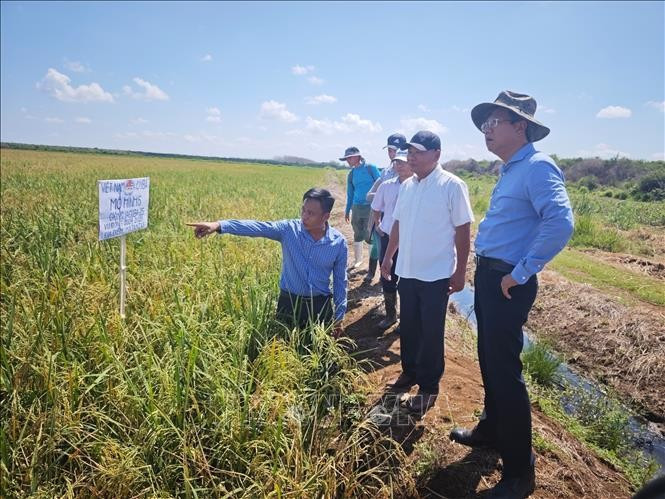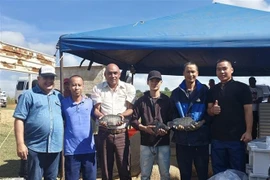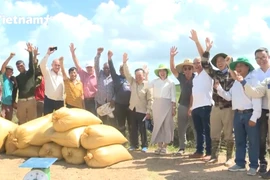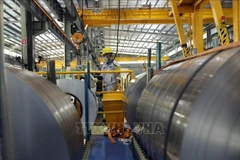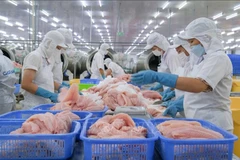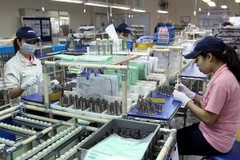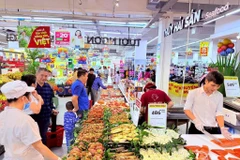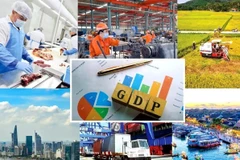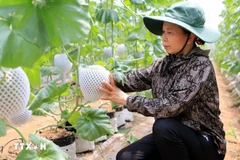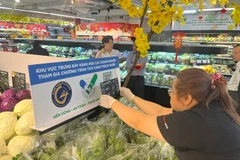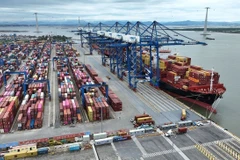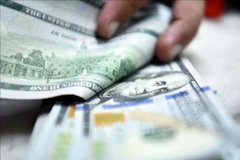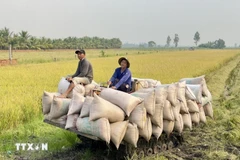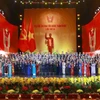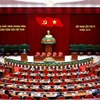Havana (VNA) – A rice production cooperation project between Vietnam and Cuba launched more than two decades ago has generated positive results, becoming a model that should be expanded, said Vietnamese Ambassador to Cuba Le Quang Long.
In a recent visit to a rice field in Matanzas province which is part of the project, the ambassador affirmed that both governments are always ready to create favourable conditions for this project to continue to develop and contribute to Cuba's mission of ensuring food security.
Under the project implemented since 2003, Vietnam sent its experts to Cuba to directly guide Cuban people to change their farming methods, provided training, and donated some specialised agricultural machinery. The rice fields in Matanzas province are the result of technical support from Vietnamese experts to help Cuba become self-sufficient in rice supply for years.
According to the Cuban project management board, the 2020-2025 phase of the rice production project in Matanzas province has achieved outstanding results. At demonstration model No. 4, where the most advanced techniques were applied, the rice yield in 2024 reached 11.16 tonnes per ha in two crops each year, far exceeding the target of 10 tonnes and 3-4 times higher than the national average yield.
At a mass production scale (Model 5), nearly 2,000 ha out of 5,798 ha of rice yielded 5.31 tonnes per ha, three times higher than the average yield of the Cuban rice industry. The total rice output in the 2024-2025 winter crop is 13,005 tonnes, of which model 5 alone contributed 10,368.49 tonnes.
The project not only improves productivity but also builds a synchronous infrastructure system. To date, 4,708 ha have been leveled using laser technology, 2,757 km of intra-field roads have been upgraded, and 5,942 km of canals and ditches have been renovated. This system not only serves rice production, helping to optimise irrigation and field management processes, but also creates a foundation for the development of many other crops.
Regarding human resource training, the project has organised 3,398 agricultural extension activities, training 29,207 farmers, technicians and managers. Notably, 25 Vietnamese rice varieties have been tested in Cuba, of which four promising varieties are completing registration procedures.
Within the framework of the project, Vietnam also supported Cuba in equipping a system of synchronous agricultural machinery and equipment worth more than 17 million USD. This important resource has contributed to increasing labour productivity by 40-50% compared to traditional farming methods, while significantly reducing post-harvest losses.
Orlando Linares Morrell, President of the Agricultural Business Group (GAG) under the Cuban Ministry of Agriculture, said that thanks to the technology transfer from Vietnamese experts, Cuba has built a sustainable rice production system that is capable of adapting to climate change.
Gerardo Rodríguez, one of the producers participating in the project, said that they learn from Vietnamese experts not only farming techniques, but also the spirit of resilience and creativity to overcome all challenges. Even when hail destroyed part of the field, they still believed in a bumper crop.
Pham Van Thuan, head of the Vietnamese rice expert delegation, said that the project receives special attention from Cuban authorities at all levels. The teams of experts from the two countries have worked together for many years, understanding each other's culture and working style, so the exchange of expertise and technical transfer became very convenient.
Thuan said the biggest difficulty is the shortage of electricity, gasoline, oil and machinery and materials in Cuba. However, up to now, the project has achieved, and event exceeded all set targets, from area scale, productivity to output./.
